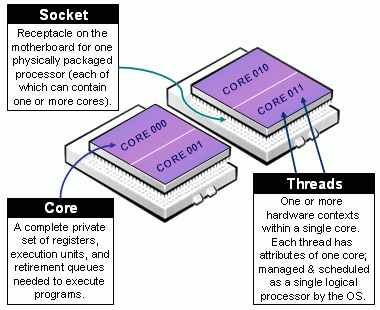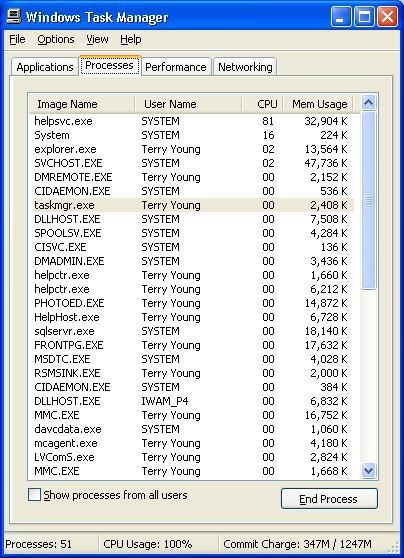| Snažíme se lokalizovat naše webové stránky v co největším počtu jazyků, jak je to možné, ale tato stránka je v současné době stroje přeloženy pomocí Google Translate. | zavřít |
-
-
produkty
-
prostředky
-
podpora
-
společnost
-
Rozdíly mezi procesy a služby v systému WindowsDifferences Between Processes and Services in Windows
Podle Steve Horton Srpen 20, 2013control panel, processes, services, task manager, windows1 KomentářKdykoli otevřete Správce úloh, všimnete si karty Procesy, která obsahuje seznam otevřených programů a kartu Služby, která obsahuje seznam … co přesně?
Chcete-li odpovědět na tuto otázku, budeme se muset podívat na procesor.

Schéma fungování procesoru.Ach chlapec, procesory.
Procesory mají, jak víte, jádra. Typicky vícenásobná jádra – procesory AMD chtějí mít 4 až 8 a Intel procesory mají asi stejnou částku.
Jádro je součástí procesoru, který provádí práci. Na druhé straně vlákna jsou přiřazení, která jsou dána každému jádru – v minulosti by jedno jádro odpovídalo jednomu vláknu, avšak Intel hyperthreading umožňuje jednomu jádru pracovat na více procesech současně. Hyperthreading dělá jediné jádro jako dva nebo více virtuálních jader – tak na vašem počítači, předpokládá se, že máte extra jádro.
Na rozdíl od obecné víry, většina z toho, co děláte na počítači, není multitasking. Většina uživatelů je na procesorech typu dual-to-quad core a jakmile projdete dvěma až čtyřmi procesy (nápověda: už jste již dávno minulý), už nejste víceúčastní. To však není špatná věc, a to je důvod, proč si nevšimnete – tyto jádra žonglují vaše procesy tak rychle, že pro lidské smysly je rozdíl nepozorovatelný – a samozřejmě, když to uděláte zpoždění oznámení, tyto procesy jsou samozřejmě trochu pomalejší než obvykle.
Procesy a služby jsou však zpracovány stejným způsobem jako procesor, nikoliv však s operačním systémem. Rozdíl mezi procesem spočívá v tom, že se projevuje v aplikaci, s níž přímo komunikujete, jako je váš webový prohlížeč nebo klient IM. Služba se nedodržuje stejná pravidla a obvykle běží mimo vaši přímou interakci – vždy na antiviru, systémových hodinách, takových věcech.
Takže v zásadě rozdíl mezi procesem a službou spočívá v tom, že s ním neustále narážíte, ale obecně neříkáte druhou, která často. Služby můžete spravovat vyhledáváním služeb v ovládacím panelu a volbou, které služby se spouštějí a kdy spouštějí. Ujistěte se, že vám neporušíte službu, pokud to nepovede k problému, nebo víte, co děláte – vyřazení důležitých služeb může způsobit selhání operačního systému a nikdo to nechce.

Procesy v Správci úloh systému Windows.Was this post helpful?YesNoVolný, uvolnit Aktualizace ovladačů
Aktualizujte své ovladače za méně než 2 minuty, abyste si mohli užívat lépe výkon PC - Volný, uvolnit.
Volný, uvolnit Aktualizace ovladačů
Aktualizujte své ovladače za méně než 2 minuty, abyste si mohli užívat lépe
výkon PC - Volný, uvolnit.
Nenašli jste odpověď?Zeptejte se na naší komunity odborníků z celého světa a obdržet odpověď v žádném okamžiku vůbec.most relevant poslední články Připněte si to na Pinterest